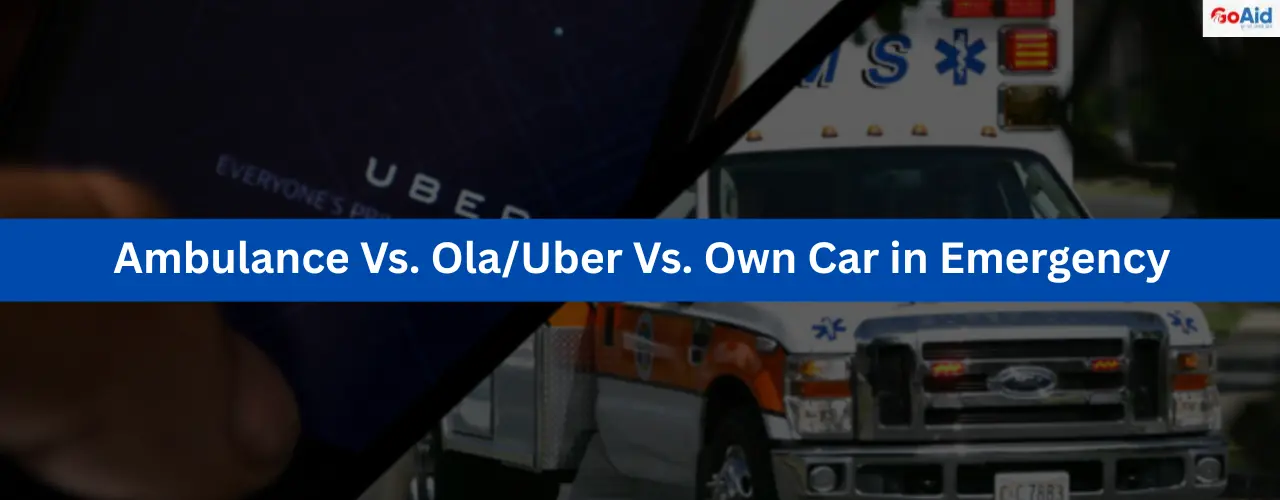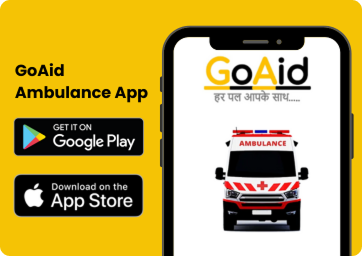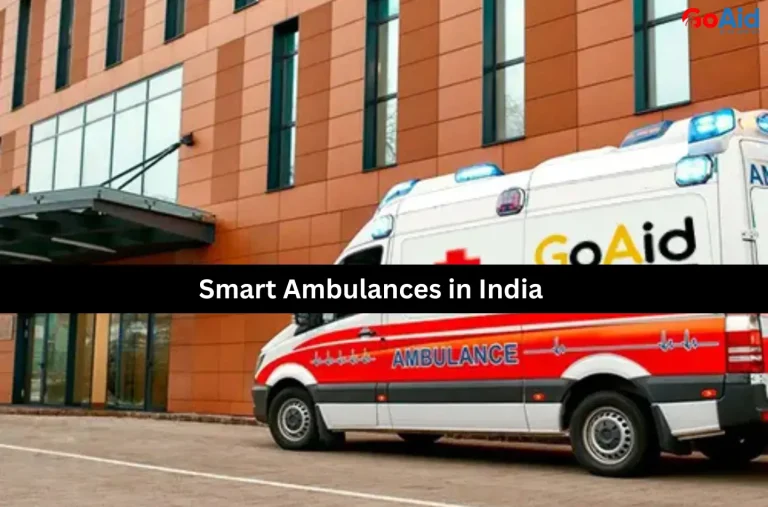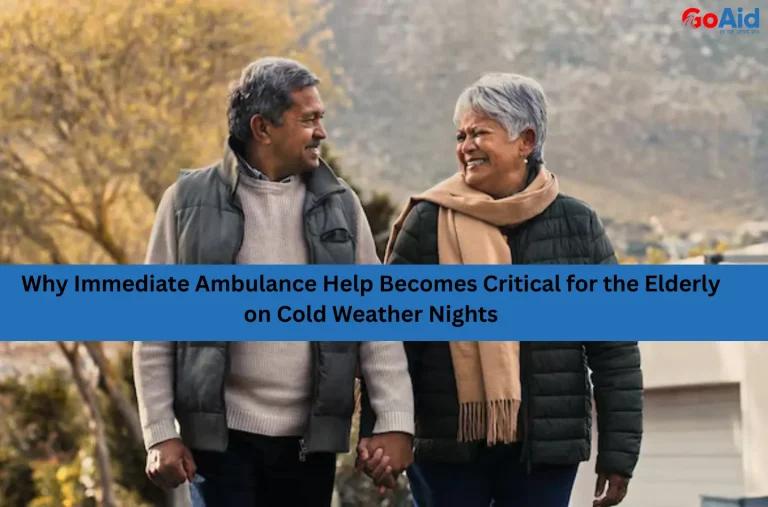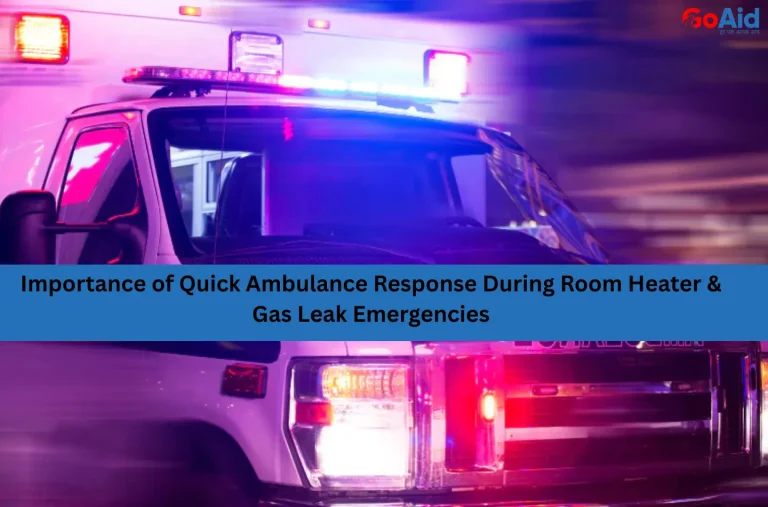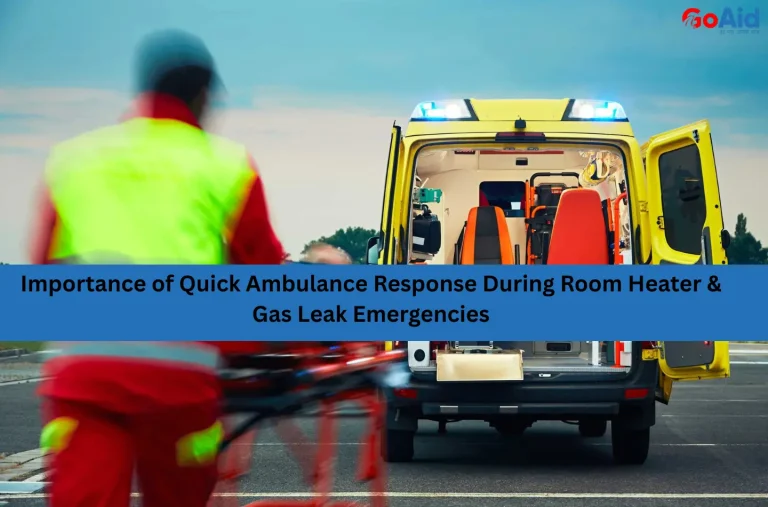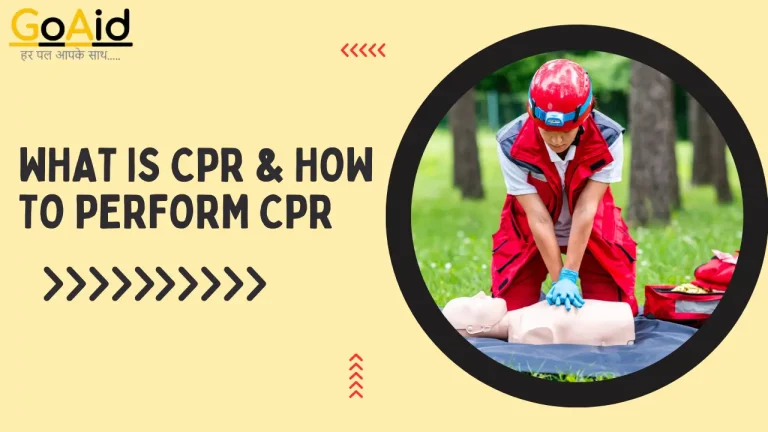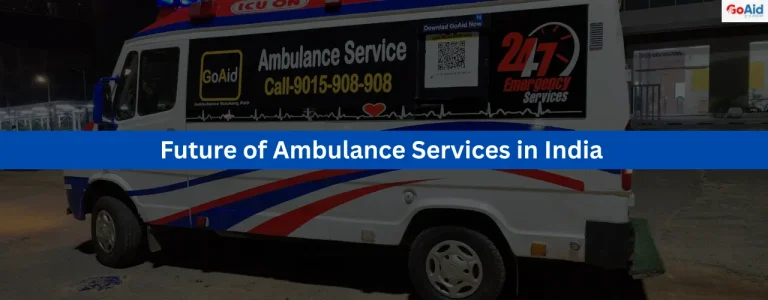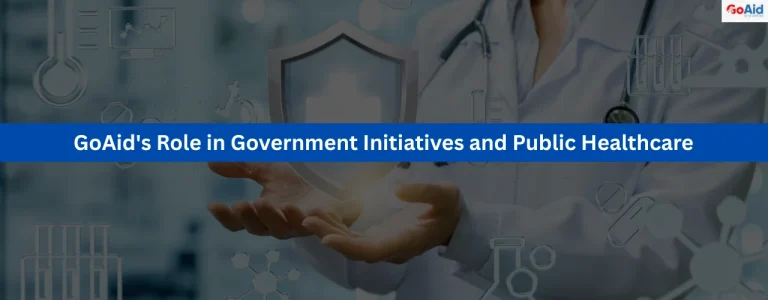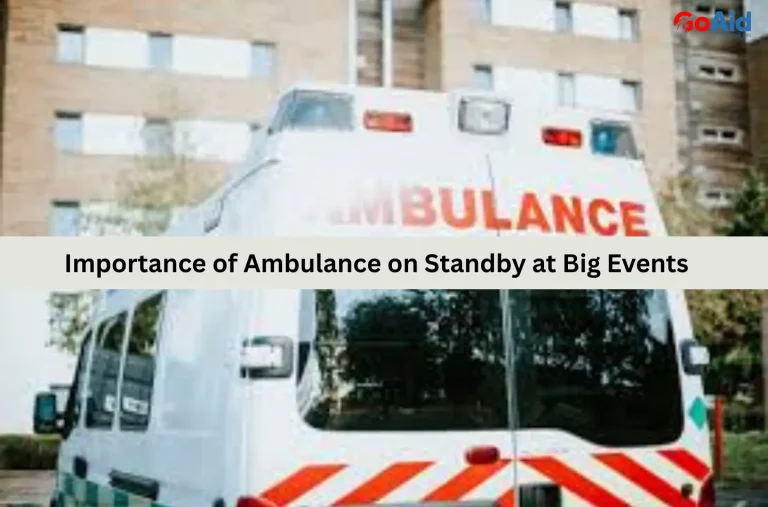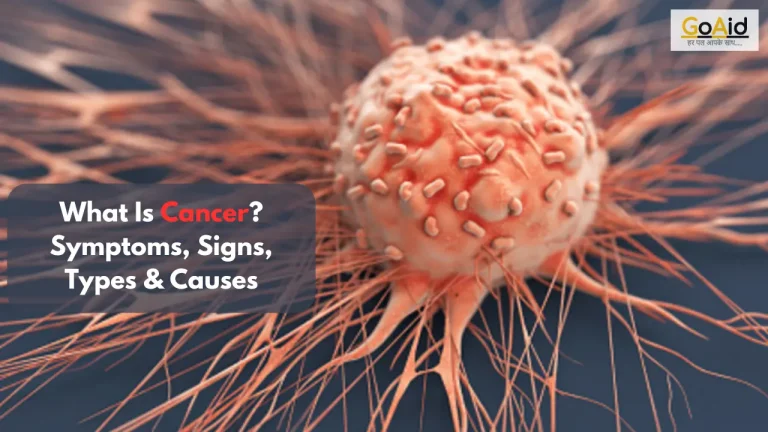In a medical emergency, where every second counts, people should have the right knowledge about the different modes of medical transportation. No matter if it is Ola/Uber or your own car, one should always choose the safe and reliable mode of transport. The right choice about the transport mode can save the lives of their loved ones.
In this blog, we have mentioned the different modes of emergency medical transportation and also compared emergency transport options, which will help you to make the right decision during any medical emergency. Are you interested in reading this blog? If yes, then let’s start reading
Understanding Emergency Transport Options
When it comes to Ambulance services in Emergency Situations, some people hesitate and opt for alternatives like Cab Services in emergencies. LetŌĆÖs explore how each emergency transport option compares in real-life situations.
1. Ambulance Services
Ambulances, like those offered by GoAid, provide the fastest, safest medical transport equipped with paramedics and life-saving tools, making them the most reliable option in emergencies.
2. Cab Services (Ola/Uber)
Though fast and easy to book, using Ola or Uber in an Emergency lacks the crucial medical support needed during critical conditions, increasing risk.
3. Private/Own Vehicle
Using your car in emergencies may seem practical, but it lacks professional support, patient handling experience, and may delay care due to traffic or panic.
Also Read: Ambulance Number in Delhi: Your Lifeline in Times of Crisis
Ambulance Service in Emergency Situations
Ambulance Service in Emergency Situations, especially from providers like GoAid, ensures rapid, medically-equipped transport when every second matters. Here are the top benefits:
- Quick Response: GoAid provides ambulance service within just 10 minutes of booking, reducing life-threatening delays.
- Onboard Medical Equipment: Ambulances are equipped with essential tools like oxygen, ventilators, and defibrillators for emergency care.
- Trained Paramedics: Professionals on board manage critical conditions and begin treatment before reaching the hospital.
- 24/7 Availability: Ambulance services like GoAid operate round-the-clock, 365 days a year, for uninterrupted support.
- Traffic Clearance Access: Ambulances can navigate through traffic swiftly, thanks to emergency route access and priority signals.
- Interstate Emergency Coverage: GoAid offers long-distance transport, vital for specialized treatments in distant hospitals.
- Affordable and Approved: GoAid follows government-approved rates, making quality emergency transport accessible and economical.
Cab Service in Emergency (Ola/Uber) ŌĆō The Hidden Risk
In a medical emergency, using cab services like Ola/Uber poses several risks. LetŌĆÖs explore why itŌĆÖs not the safest option.
- No Medical Equipment: Cabs lack life-saving tools like oxygen, stretchers, or defibrillators, crucial for emergencies.
- Untrained Drivers: Cab drivers are not trained in first aid or handling medical crises.
- Panic and Delays: Unfamiliarity with hospitals or routes may lead to wrong turns or wasted time.
- No Traffic Clearance: Cabs must follow regular traffic rules, causing critical delays during peak hours.
- No Patient Positioning: Patients canŌĆÖt lie down or be safely stabilized, increasing discomfort or risk.
- Cost Surge and Availability: During rush hours or at night, Ola/Uber fares surge or may not be available.
- No Emergency Support Team: Unlike ambulances, thereŌĆÖs no backup team or paramedic support during the journey.
Using Your Car ŌĆō Is It Safe or Risky?┬Ā
In a crisis, driving your vehicle might seem faster, but it comes with serious risks. Unlike an Ambulance Service in Emergency Situations, personal vehicles lack the necessary medical tools and trained staff.
You may panic while driving or not know how to respond to sudden symptoms. Unlike a Cab Service in an Emergency, your car doesn’t even guarantee immediate availability of someone to drive or guide.
The Emergency Transport Comparison clearly shows ambulances provide superior support.
Handling an unconscious or injured patient alone increases risk and delays care. Moreover, private cars canŌĆÖt bypass traffic or ensure safe patient handling. So, while itŌĆÖs an option in rare cases, relying on it during life-threatening situations is highly risky.
Comparative Table: Which Option is Best in Emergencies?
HereŌĆÖs a quick emergency transport comparison to help you choose the best emergency vehicle for you wisely:
| Feature / Option | Ambulance | Ola/Uber | Own Car |
| Medical Equipment | Yes | No | No |
| Trained Paramedics | Yes | No | No |
| Traffic Clearance Access | Yes | No | No |
| Patient Handling Experience | Yes | No | No |
| Cost | Affordable (Govt Approved) | Surge Pricing | Fuel & Parking Costs |
| Risk Factor | Lowest | High | Medium to High |
Why Delay Can Be Fatal?
Emergencies like heart attacks, strokes, or major injuries demand instant medical intervention. Any delay in reaching a hospital can lead to permanent damage or death. Ambulance Services in emergencies come equipped with tools and professionals who begin treatment en route, buying precious time.┬Ā
┬ĀIn an emergency, using Ola or Uber may cause critical delays due to untrained drivers, lack of equipment, or availability issues. Even your car may not help if youŌĆÖre panicked or stuck in traffic.
The Best Way to reach the Hospital in an emergency is by ambulanceŌĆödelays reduce survival chances significantly, especially in the ŌĆ£golden hour.ŌĆØ Choosing the right transport is not just a decision, itŌĆÖs a lifeline.
Why Should We Always Choose an Ambulance?
A medical emergency demands professional medical transport. HereŌĆÖs when GoAid or any Ambulance Service is your safest choice:
- Chest Pain or Heart Attack: Ambulance staff can begin CPR or give oxygen instantly.
- Severe Bleeding: Quick bleeding control by paramedics saves lives.
- Unconsciousness: The Patient can be stabilized safely en route.
- Stroke Symptoms: Rapid response improves chances of recovery.
- Severe Injuries: Proper patient handling avoids further damage.
- Pregnancy Complications: GoAid offers free ambulance services for pregnant women in many cities.
- COVID or Infectious Diseases: Isolated, sanitized ambulances prevent the spread.
Pro Tip: Pre-Save Emergency Contacts
Emergencies donŌĆÖt come with warnings. Pre-saving critical contacts can save lives. Add your nearest hospital number, a trusted family member, and a reliable Ambulance Service in emergencies like GoAid (8008280020) to your phone.┬Ā
If itŌĆÖs midnight or peak traffic hour, knowing who to call instantly can cut life-threatening delays. Also, download the GoAid app for quick access. Every second mattersŌĆöprepare today to protect your tomorrow.
Book Ambulance: GoAid Ambulance Service
Conclusion to Ambulance Vs. Ola/Uber Vs. Own a Car in an Emergency
When lives are on the line, the right decision can be life-saving. While using Ola or Uber in an Emergency or driving your car may seem quick, they lack the critical features an ambulance offersŌĆötrained staff, medical tools, and priority traffic access.
Ambulance Service in Emergency Situations is the safest and Best Way to reach the Hospital in an Emergency. With services like GoAid, fast, affordable, and expert help is just a call away. Choose wisely. Because delay is not just time lostŌĆöitŌĆÖs life lost.
FAQs related to Ambulance Vs. Ola/Uber Vs. Own a Car in an Emergency
Question-1: Can I use Ola/Uber in case of an emergency if no ambulance is available?
Answer: Yes, but itŌĆÖs risky due to no medical support. Use only as a last resort if no ambulance is available.
Question 2: Why are ambulances better than your car during a heart attack?
Answer: Ambulances have trained paramedics and medical tools to start immediate treatment, improving survival chances.
Question 3: Can I call an ambulance for non-serious health issues?
Answer: Yes, especially if mobility is limited or there’s potential for escalation. Ambulances offer safe patient transfer.
Question 4: What if no ambulance is available?
Answer: Use a cab or your car as a last option, but still inform the hospital to prepare for immediate care on arrival.

